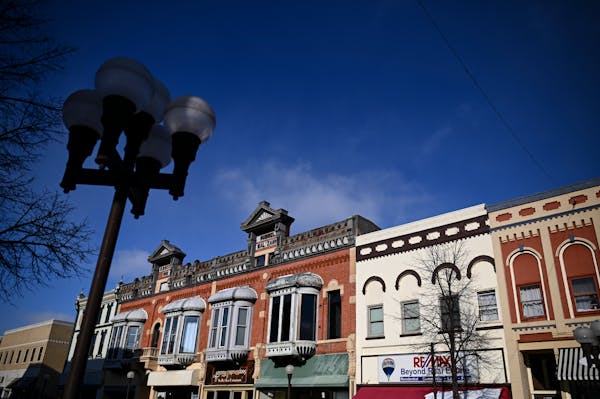WASHINGTON – Democratic U.S. Rep. Angie Craig has outraised Republican challenger Tyler Kistner in recent weeks, but millions in outside spending from partisan groups are influencing the race for Minnesota's most competitive congressional district.
The two are running to represent the Second District, which stretches from the Twin Cities' southern suburbs through rural communities toward Mankato.
Federal filings show that Craig brought in a little under $1.6 million while spending more than $3.27 million from July 21 through the end of September. The Democrat seeking a third term has over $3 million in cash left to spend while trying to overcome midterm headwinds challenging Democrats across the country.
Kistner's campaign raised close to $623,000 and spent over $680,000. The Republican, who lost a close race to Craig in 2020, closed September with slightly less than $500,000 in spending power remaining.
The two candidates have estimated that interest groups and individuals are pouring roughly $30 million into the pivotal race. And outside spending from Republican and Democratic groups is playing a major part, according to the ad-tracking firm AdImpact that has detailed recent and upcoming spending on radio and television in the race.
The House Republican-focused Congressional Leadership Fund is spending more than $5 million, according to AdImpact, while the National Republican Congressional Committee is spending $3.72 million along with another roughly $1 million in hybrid spending split with Kistner's campaign.
"Republicans are investing here because Tyler Kistner has what it takes to win and we have a real opportunity to flip this seat," CLF press secretary Cally Perkins said in a statement.
AdImpact's data also show the Democratic Congressional Campaign Committee spending around $2.6 million while the Democrat-aligned House Majority PAC is pitching in with more than $3 million.
"We're committed to keeping this seat blue and sending Angie back to Congress where she will continue to be a fierce advocate for Minnesota families," DCCC spokesman Matt Corridoni said in a statement.
The Second District is seen as Republicans' best opportunity to pick up a seat in Minnesota as the party looks to take back control of the U.S. House. Republicans need to net five seats across the country to do so, and races like the one between Craig and Kistner may prove critical in deciding which party has control of the chamber next year.
"The outside spending is important in this race because if this race were only about the candidates' own campaigns, Craig has a significant edge when it comes to fundraising over Kistner," said Kathryn Pearson, a University of Minnesota political-science professor.
A recent KSTP/SurveyUSA poll found the race essentially tied, with Craig holding a one-point lead over Kistner.
In the competitive First District covering southern Minnesota, new fundraising reports show DFL candidate Jeff Ettinger loaning his campaign $700,000 after falling short against Republican Rep. Brad Finstad in the August special election. The two are facing off again this fall for a full term.
Records from July 21 to the end of September show Ettinger loaned his campaign $700,000 and raised more than $373,000. His effort also spent nearly $707,000 and still had around $505,000 banked.
Finstad raised more than $581,000 and has close to $337,000 in cash after spending around $406,000.
In the suburban Third District, DFL incumbent Rep. Dean Phillips continues to outpace Republican challenger Tom Weiler in a difficult race for the GOP.
The second-term Democrat's re-election campaign took in more than $333,000 and spent over $400,000, leaving Phillips with over $721,000 on hand. Weiler raised a little under $142,000, spent over $164,000 and headed into October with around $211,000 in cash.
